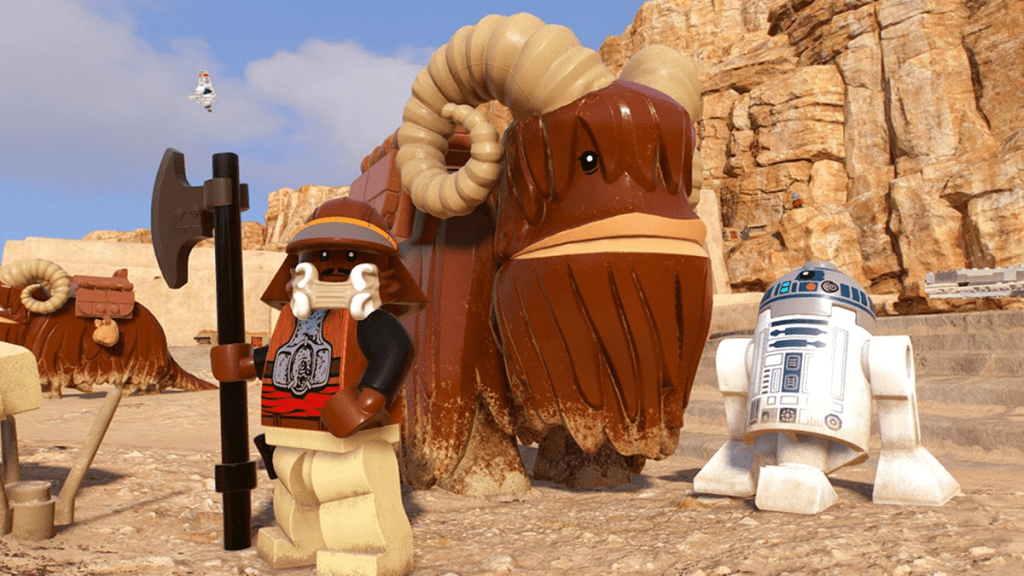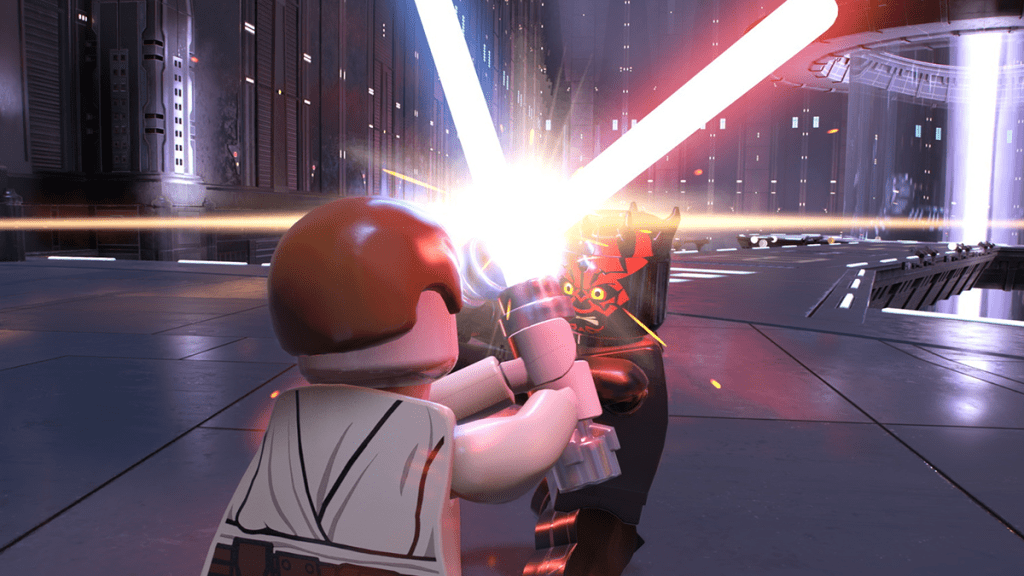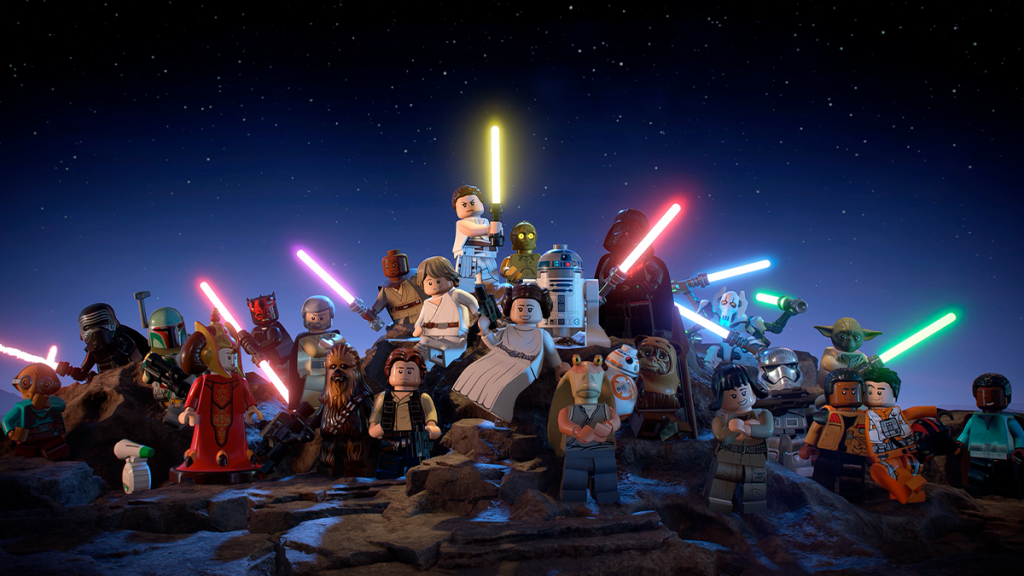Star Wars has always been a part of my life. I remember watching the original trilogy growing up and going to see The Phantom Menace in theaters with my parents when it came out. A New Hope was even one of the first DVDs that I bought when I went away to college. Despite this, I was never more than a casual fan of the series and its characters, and if it hadn’t been for the permanent place of worship that the franchise has in pop culture, I’m not sure I would’ve given it much of a thought beyond “Hey, I remember watching those movies when I grew up, that was fun.” Still, it was this lingering enjoyment of one of western pop culture’s biggest phenomena that caused me to volunteer to do some work playing Lego Star Wars: The Skywalker Saga when it was released last year.
For those unaware, when you work with a video game, you basically live in its world for the duration of the time that you’re playing it. When you finally finish writing your review/preview/feature/guide, it feels a little bit like you’re breaking up with someone. Sure, you can argue that anyone who played God of War Ragnarök for 90 hours the first week it was released also lived in that world, but when you need to notice details about a game and remember things for work, you usually get into a different, more focused mindset. This was the first time that I had ever really focused on or immersed myself in the world of Star Wars.
Let’s just say I ran into some bugs, and it was about the fourth time I was playing through the levels that were based on A New Hope that I finally realized I felt different. I’d known these characters all my life, and while I enjoyed watching them, I suddenly realized I actually cared about them. Part Stockholm Syndrome and part “Dear god I don’t want to have to replay this level again,” I realized I was genuinely rooting for them. Amidst the strong overarching story of Star Wars and the funny, immersive humor that is so characteristic of Lego games, I realized that for the first time, I could actually relate to this world and understand it. It wasn’t just spaceships and planets with sand anymore — it was X-Wings and TIE Fighters and Tatooine and Jakku. I connected with this world and this story in a way that I never had before.

Immediately, I started devouring all the Star Wars media I could get my hands on. I re-watched the original trilogy, I started watching The Clone Wars, I dug into Timothy Zahn’s Thrawn trilogy and I ordered about $80 worth of Star Wars Lego, plus an R2-D2 Tamagotchi. While some parts of it were admittedly still hard to keep up with — “Which planet is Rodea again? What species is Hondo?” — I was, for the first time ever, able to sit back and immerse myself in this world without having to figure out all of the fiddly details and without having a hard time keeping up with everything going on. For better or for worse, Lego had seen to it that all of what I needed was now pretty much cemented in my brain.
Lego games tend to be immersive by nature. You live in the entire little world made of Lego bricks, even in the hub worlds, and the humor and gameplay stays the same throughout the entire game — usually across different Lego games. It’s a formula that works for them that they have been using for a while, ever since they hit on the basics of it with the original Lego Star Wars: The Video Game back in 2005. They’ve applied it to a variety of franchises, from The Lord of the Rings to Marvel and DC, finding success every time. What really makes The Skywalker Saga stand out from the rest is in just how immersive it is.
Star Wars is known for having an enormous amount of lore and backstory to the universe. The theatrically released movies barely scratch the surface of the extended universe, with hundreds of entries in the Legends canon that are now defunct but still used in part for inspiration. From video games to multiple TV series, hundreds of comic issues and books, tabletop games, and more, there is a huge amount of supplementary content. It’s one of sci-fi’s most prolific properties, and its closest competitors of Doctor Who and Star Trek are still blown out of the water. Star Wars is a galaxy that feels real — one that people want to visit, rather than just a movie series that ends when the credits roll. Somehow, TT Games found a way to actually translate that immersiveness into the game.

There are oodles of planets to visit, hundreds of sidequests, more places to explore than you could shake a porg at, and a ludicrous amount of NPCs for you to talk to and interact with — never mind the hundreds of playable characters to unlock and 45 levels of the game to actually play through.
On the surface, this can sound overwhelming, but in practice, it’s easy to get to grips with as you lose yourself in the galaxy. Tie it all together with low-stakes Lego gameplay, top-notch voice acting, and an assortment of puns and visual-based jokes and it’s the perfect microcosm of the Star Wars universe to introduce people to while still being tangible enough for casual fans to get a grip on.
In the end, maybe it was a weird form of working Stockholm Syndrome that forced me to understand Star Wars. Maybe it was the Lego humor and plot breakdowns making it more accessible. Perhaps after 30 years of exposure, it finally sank into my psyche. I don’t have an answer for why Lego Star Wars: The Skywalker Saga was the tipping point of entry into my love of the franchise, but I do know that I’m glad it was, and I wouldn’t change that for anything.










